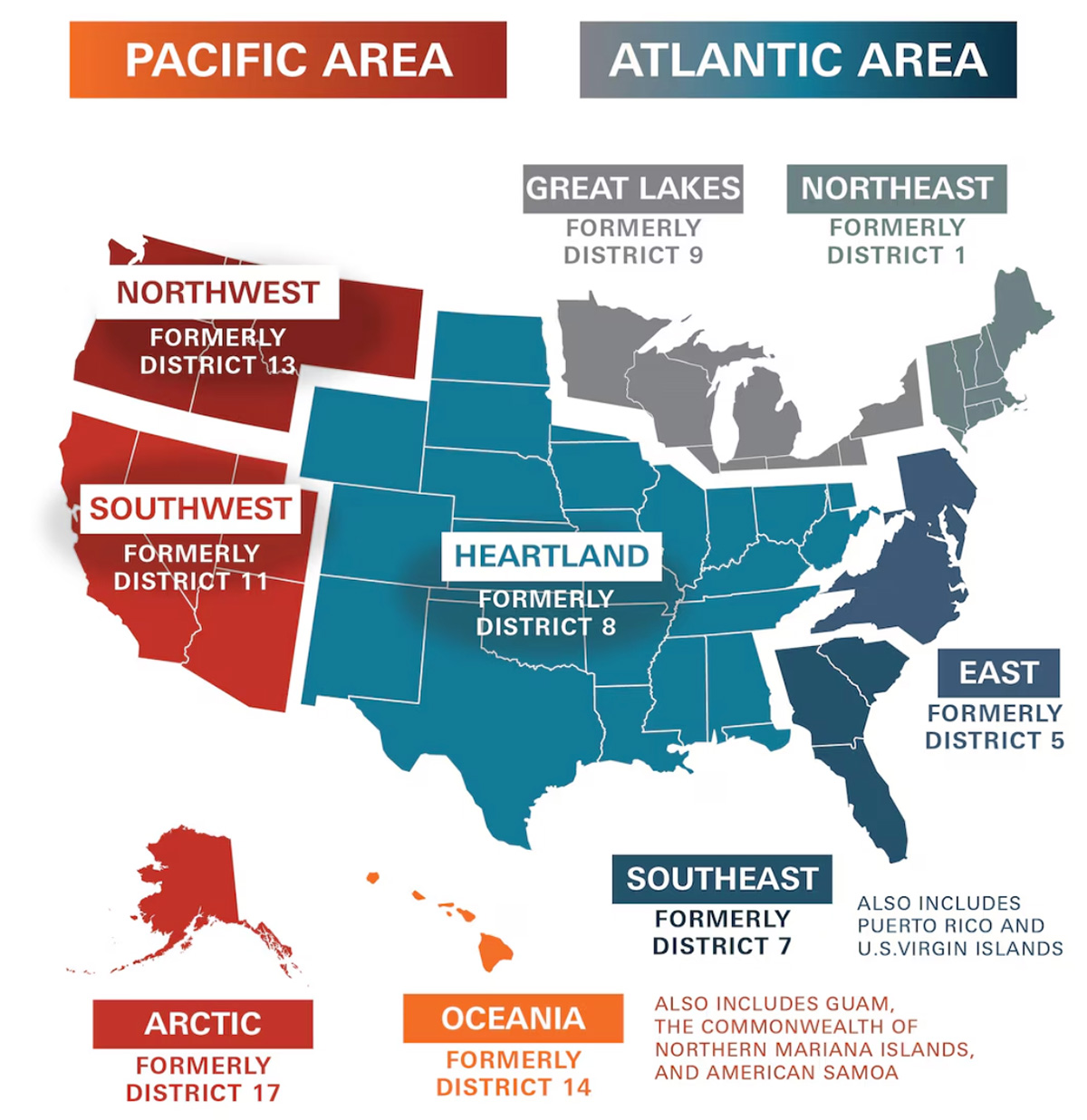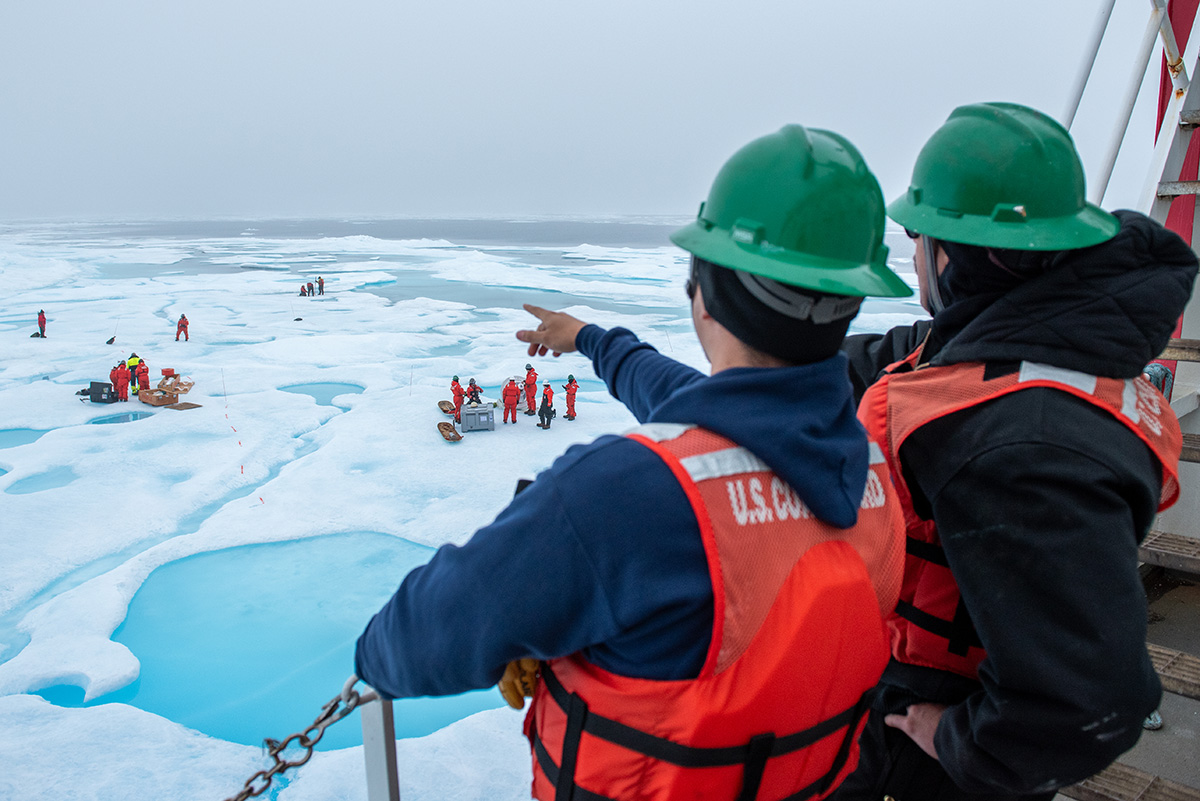
The U.S. Coast Guard Cutter Storis transits Elliott Bay as it arrives at Coast Guard Base Seattle, July 11, 2025. Storis, temporarily homeported in Seattle, will support upcoming Arctic operations while the Coast Guard awaits delivery of its next generation of polar icebreakers.
This week, we explore historic U.S. investment in Arctic security through:
- The Big Picture: One Big Beautiful Bill & the Arctic
- Lat & Long: Coast Guard Arctic District
- From the Field: The Healy’s 2025 Arctic Mission
The Big Picture
The One Big Beautiful Bill Act
Earlier this month, the One Big Beautiful Bill Act (OBBBA) was signed into law. Senator Dan Sullivan (R‑AK), member of the Armed Services Committee and Senate Arctic Caucus, hailed it by saying the bill is “cementing Alaska’s role as the nation’s Arctic operations hub.”
So what’s in it for the Arctic?
Key provisions include nearly $2 billion for advanced radar sites—for example at Clear or Shemya—and expanded military presence via the Pacific Deterrence Initiative’s $12 billion earmark for increased Alaskan Command exercises in the region demonstrating the linkages between the Arctic and the Pacific via Alaska.
On the maritime front, the bill dramatically boosts U.S. Coast Guard capabilities. It allocates $4.3 billion for up to three new heavy Polar Security Cutters (Ice Breakers), $3.5 billion for medium Arctic Security Cutters, and $816 million for light and medium icebreaking vessels. Combined, this likely marks the largest-ever Arctic maritime investment in U.S. history at nearly $9 billion.
These investments aim to close the gap with Russia’s fleet—57 vessels—and counter growing Chinese presence in the region. They also support infrastructure development in the U.S. Arctic, including $300 million toward home‑porting the recently acquired icebreakers in Juneau, Alaska.
From an Arctic security lens, the OBBBA promises investment toward reinforced radar and military readiness, dramatically expanded Arctic icebreaking capacity, upgraded docks and shore facilities, and enhanced exercises.
Lat & Long

Map of USCG operational districts featuring new geographic district names.
It’s been quite a month for the U.S. Coast Guard and its Arctic initiatives. On top of major investments in OBBBA, this month the Coast Guard officially changed the name of District 17 to U.S. Coast Guard Arctic District as part of its Force Design 2028 initiative. This shift from numeric to geographic designations isn’t just cosmetic—it will align district names with areas of responsibility, enhance interagency coordination across Alaska, the North Pacific, Bering Sea, and Arctic Ocean, and “ensure the American public and maritime stakeholders can easily find and understand the districts in which they live, recreate and operate.” The Arctic District renaming was marked during a ceremony in Juneau, Alaska, the future home to at least one new icebreaker, where Rear Adm. Bob Little took command from Rear Adm. Megan Dean.
From the Field

Deck department personnel aboard the icebreaker USCGC Healy (WAGB 20) observe science equipment installation on a multi-year ice floe in the Beaufort Sea in August 2023 during the Healy’s last deployment in support of the Arctic Mobile Observing System and Nansen & Amundsen Basins Observational System missions.
Currently deployed in the Arctic, the USCGC Healy, a 420-foot icebreaker, departed Seattle on June 19, 2025, embarking on a months-long expedition supporting scientific efforts to the Arctic. The Healy is conducting dual high-latitude missions: one partnering with the Office of Naval Research to deploy autonomous Arctic observing instruments, and another with the National Science Foundation servicing moored arrays under the Nansen & Amundsen Basins Observational System. These efforts gather data on sea ice dynamics and ocean circulation—essential for understanding and securing U.S. interests in the High North.


